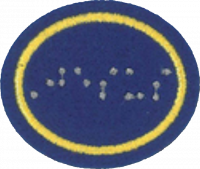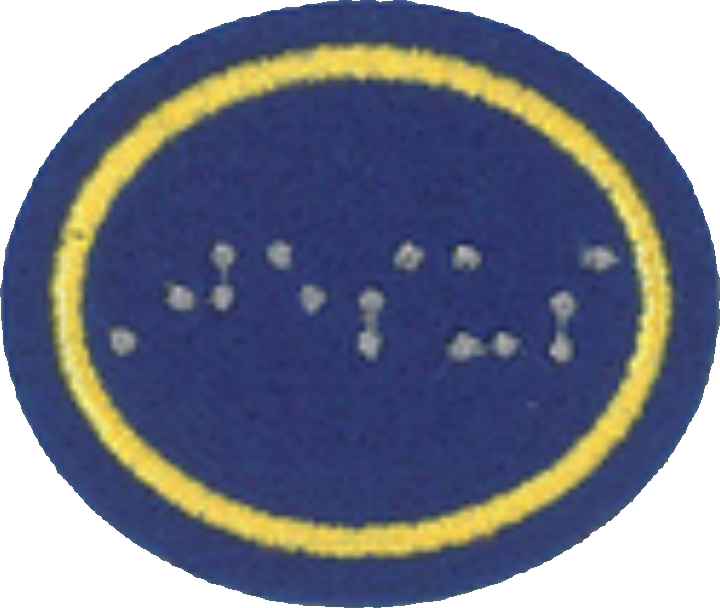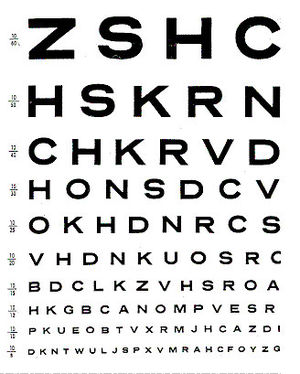Difference between revisions of "AY Honors/Braille/Answer Key/es"
(Created page with "</noinclude> <!-- 9. ¿Quién fue el pionero adventista Austin O. Wilson y qué hizo? -->") |
(Created page with "<noinclude>") |
||
| Line 195: | Line 195: | ||
{{clear}} | {{clear}} | ||
| − | + | {{clear}} | |
| − | |||
| − | |||
| − | + | {{clear}} | |
| − | |||
| − | |||
| − | + | {{clear}} | |
| − | |||
| − | |||
| − | + | {{clear}} | |
| − | |||
| − | |||
| − | + | {{clear}} | |
| − | |||
| − | |||
| − | + | {{clear}} | |
| − | |||
| − | |||
| − | |||
| − | |||
| − | + | {{clear}} | |
| − | |||
| − | |||
| − | + | {{clear}} | |
| − | |||
| − | |||
| − | + | {{clear}} | |
| − | |||
| − | |||
| − | + | {{clear}} | |
| − | |||
| − | |||
| − | + | {{clear}} | |
| − | |||
| − | |||
| − | + | {{clear}} | |
| − | |||
| − | |||
| − | + | {{clear}} | |
| − | |||
| − | |||
| − | + | {{clear}} | |
| − | |||
| − | |||
| − | + | {{clear}} | |
| − | |||
| − | |||
| − | + | {{clear}} | |
| − | |||
| − | |||
| − | + | {{clear}} | |
| − | |||
| − | |||
| − | + | {{clear}} | |
| − | |||
| − | |||
| − | + | {{clear}} | |
| − | |||
| − | |||
| − | + | {{clear}} | |
| − | |||
| − | |||
| − | + | {{clear}} | |
| − | |||
| − | |||
| − | + | {{clear}} | |
| − | |||
| − | |||
| − | + | {{clear}} | |
| − | |||
| − | |||
| − | + | <noinclude></noinclude> | |
| − | <noinclude | ||
| − | |||
{{CloseReq}} <!-- 9 --> | {{CloseReq}} <!-- 9 --> | ||
{{ansreq|page={{#titleparts:{{PAGENAME}}|2|1}}|num=10}} | {{ansreq|page={{#titleparts:{{PAGENAME}}|2|1}}|num=10}} | ||
| − | <noinclude> | + | <noinclude></noinclude> |
| − | </noinclude> | + | <!-- 10. Discutir formas de conocer e interactuar con una persona que es ciega. Hacer una de las siguientes: --> |
| − | <!-- 10. | ||
| − | |||
| − | + | <noinclude></noinclude> | |
| − | <noinclude | ||
| − | |||
{{ansreq|page={{#titleparts:{{PAGENAME}}|2|1}}|num=10a}} <!--T:17--> | {{ansreq|page={{#titleparts:{{PAGENAME}}|2|1}}|num=10a}} <!--T:17--> | ||
| − | <noinclude> | + | <noinclude></noinclude> |
| − | </noinclude | ||
| − | |||
| − | + | {{clear}} | |
| − | |||
| − | |||
| − | |||
| − | |||
| − | |||
| − | |||
| − | |||
| − | |||
| − | + | <noinclude></noinclude> | |
| − | <noinclude | ||
| − | |||
{{CloseReq}} <!-- 10a --> | {{CloseReq}} <!-- 10a --> | ||
{{ansreq|page={{#titleparts:{{PAGENAME}}|2|1}}|num=10b}} <!--T:18--> | {{ansreq|page={{#titleparts:{{PAGENAME}}|2|1}}|num=10b}} <!--T:18--> | ||
| − | <noinclude> | + | <noinclude></noinclude> |
| − | </noinclude | ||
| − | |||
| − | + | {{clear}} | |
| − | |||
| − | |||
| − | |||
| − | |||
| − | |||
| − | |||
| − | |||
| − | |||
| − | + | {{clear}} | |
| − | |||
| − | |||
| − | |||
| − | |||
| − | |||
| − | |||
| − | |||
| − | |||
| − | + | <noinclude></noinclude> | |
| − | <noinclude | ||
| − | |||
{{CloseReq}} <!-- 10b --> | {{CloseReq}} <!-- 10b --> | ||
{{CloseReq}} <!-- 10 --> | {{CloseReq}} <!-- 10 --> | ||
| − | <noinclude> | + | <noinclude></noinclude> |
| − | </noinclude> | + | ==Referencias== |
| − | == | ||
{{Reflist}} | {{Reflist}} | ||
| − | |||
| − | + | {{clear}} | |
| − | |||
| − | |||
| − | |||
| − | |||
| − | |||
| − | |||
<div lang="en" dir="ltr" class="mw-content-ltr"> | <div lang="en" dir="ltr" class="mw-content-ltr"> | ||
Revision as of 20:50, 22 March 2021
1
Un método de impresión destinado a ser leído sin ver, normalmente con los dedos.
2
Las personas que son legalmente ciegas, que tienen una agudeza visual de 20/200 o peor con lentes correctivos, generalmente no pueden leer letras grandes o incluso la letra más grande en una tabla optométrica colocada a 20 pies de distancia.
Aquí hay una definición adicional de Kenneth Jernigan, líder desde hace mucho tiempo de la Federación Nacional de Ciegos: «Uno es ciego en la medida en que el individuo debe idear técnicas alternativas para hacer de manera eficiente aquellas cosas que haría si tuviera una visión normal» &
2a
Nota: esta actividad no está diseñada para diagnosticar problemas visuales. Indique a los estudiantes que hagan un seguimiento con su proveedor de salud ocular con respecto a cualquier problema de la vista.
2b
Actividad: ¿Tiene sensibilidad epicrítica?
Una forma fácil de probar es sentir texturas en varias superficies.
Instructores: Arregle un área con artículos comúnmente disponibles, como papel de lija, un cuaderno de espiral, bloques LEGO, papeles lisos y texturizados, etc. Los estudiantes pueden probar su capacidad para sentir diferentes texturas para evaluar su sensibilidad epicrítica.
Nota: Incluso si una persona tiene una sensibilidad epicrítica, se necesitan años para que una persona aprenda braille. El primer paso útil es reconocer esta sensibilidad, seguido de la práctica de reconocer las células braille como contenido significativo. De la misma manera que los niños con visión tardan años en aprender a leer y escribir en su idioma nativo, la adquisición de la alfabetización en braille también requiere tiempo, capacitación y mucha práctica.
Además, una sensibilidad epicrítica razonablemente alta, la capacidad de distinguir entre pequeñas variaciones, es útil al leer braille. La mayoría de las personas que aprenden a usar braille usarán los dedos, aunque algunas pueden leerlo visualmente y otras pueden usar otra parte del cuerpo, como la lengua, cuando los dedos pierden la sensibilidad epicrítica o si se pierden todos los dedos juntos.
3
3a
Louis Braille fue un educador, inventor y músico francés que creó el braille porque quería cerrar la brecha entre las personas ciegas y las personas videntes. Louis nació en 1809 y quedó ciego de ambos ojos como resultado de un accidente infantil. Asistió al Institut National des Jeunes Aveugles (Instituto Real de Jóvenes Ciegos), que fue la primera escuela especializada en el mundo para personas ciegas. Louis aprendió a leer el sistema Haüy de letras impresas en relieve en latín. El método de impresión para el sistema Haüy utilizó papel húmedo y alambre de cobre. Debido a la complejidad de la impresión de Haüy, este sistema era prácticamente inutilizable para personas ciegas como sistema de escritura, además de ser difícil de leer.
Louis, frustrado, estaba decidido a inventar un sistema de lectura y escritura que pudiera salvar la brecha en la comunicación. «El acceso a la comunicación en el sentido más amplio es acceso al conocimiento, y eso es de vital importancia para nosotros si nosotros [los ciegos] no queremos seguir siendo despreciados o patrocinados por personas videntes condescendientes. No necesitamos piedad, ni necesitamos que nos recuerden que somos vulnerables. Debemos ser tratados como iguales, y la comunicación es la forma en que esto se puede lograr.» - Louis Braille, 1841&
En 1821, Louis se enteró de un sistema de comunicación ideado por el capitán del ejército francés Charles Barbier, llamado «Night Writing [Escritura nocturna]», que constaba de una celda de hasta 12 puntos dispuestos en dos columnas. Parte de lo que hizo atractivo este sistema fue que los lectores de este sistema también podían escribirlo sin el complicado equipo que requerían otras fuentes táctiles en ese momento. Haüy, por ejemplo, requería alambre de cobre y papel húmedo, además del espacio para secarlo.
Louis adaptó el código del Capitán Barbier en celdas de puntos en relieve, dos de ancho y hasta tres de alto, completando la mayor parte de este trabajo a los 15 años. Aunque muchos lo reconocen como un sistema ingenioso y útil, el Braille no fue adoptado por el Instituto Real para Jóvenes Ciegos, y más tarde en todo el mundo, hasta dos años después de la muerte de Louis a los 43 años.
3b
4
5
6
7
Las respuestas variarán según cada club y Conquistador.
8
9
10
10a
10b




